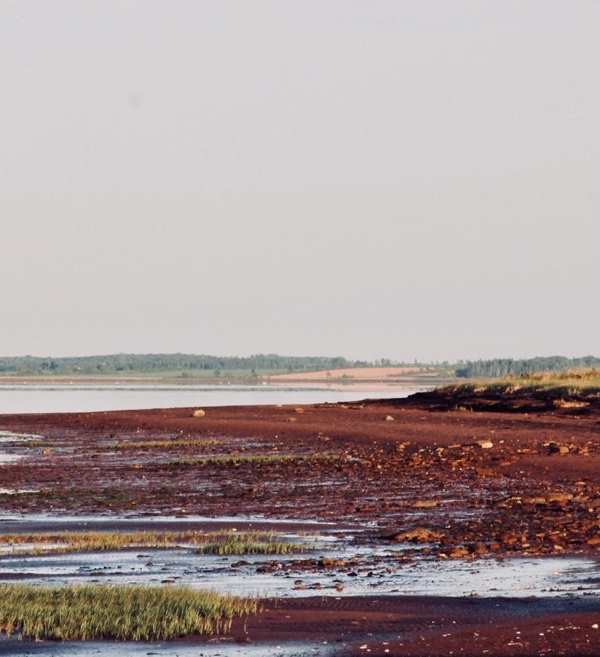Reflecting on Rollerblading Over the Past: A deconstruction of a Sociohistorical City Space
DOI:
https://doi.org/10.25071/1916-4467.40593Keywords:
sociohistorical spaces, repeated representation, racism, banality of Whiteness, somatic disorientation/reorientationAbstract
Positioning rollerblading as a form of walking, I critically reflect on my experience rollerblading to work in downtown Toronto. I never questioned whose land these roads were covering, what it meant that I could read all of the street names, nor my feelings of unconditional belonging as a Mixed-Race, White-passing, English-literate man. In this paper, I argue that everyday elements of the cityscape (re)shaped a racist sociohistorical geography and my place within it. I employ as a framework Hall’s (1980) concept of articulation, Stanley’s (2011) understanding of racisms as exclusions and Puwar’s (2004) concept of somatic dissonance. Through this lens, I deconstruct how my act of rollerblading exemplified the banality of the sociohistorical city space and unknowingly enacted the dominance of Whiteness.References
Brown, K. G. (2018, July 5). Slavery’s long shadow: The impact of 200 years enslavement in Canada. CBC Radio Ideas. https://www.cbc.ca/radio/ideas/slavery-s-long-shadow-the-impact-of-200-years-enslavement-in-canada-1.4733595
Casagranda, M. (2013). From Empire Avenue to Hiawatha Road: (Post)colonial naming practices in the Toronto street index. In O. Felecan (Ed.), Proceedings of the International Conference on Onomastics “Name and Naming” (Vol. 2, pp. 291-302). https://onomasticafelecan.ro/iconn2/proceedings/3_06_Casagranda_Mirko_ICONN_2.pdf
Chan, A. (2011). The Chinese in Toronto from 1878: From outside to inside the circle. Dundurn.
Cole, D. (2015, April 21). The skin I’m in: I’ve been interrogated by police more than 50 times—all because I’m black. Toronto Life. https://torontolife.com/city/life/skin-im-ive-interrogated-police-50-times-im-black/
Errett, J. (2016, May 7). Was Jarvis street named after a city-builder, or a slave-owner? Prepare for a debate. CBC News. https://www.cbc.ca/news/canada/toronto/jarvis-street-slavery-1.3564667
Freeman, V. (2010). “Toronto has no history!”: Indigeneity, settler colonialism, and historical memory in Canada’s largest city. Urban History Review/Revue d'histoire urbaine, 38(2), 21-35. DOI: https://doi.org/10.7202/039672ar
Grant, J. L. (2001). The dark side of the grid revisited: Power and urban design. In R. Rose-Redwood & L. Bigon. (Eds.), Gridded worlds: An urban anthology (pp. 75-100). Springer. DOI: https://doi.org/10.1007/978-3-319-76490-0_5
Hall, S. (1980). Race, articulation, and societies structured in dominance. In UNESCO (Ed.), Sociological theories: Race and colonialism (pp. 305-345). UNESCO.
Henry, N. (2018, August 1). Freedom abound: Celebrating Emancipation Day in St. John’s Ward, 1845-1860. Spacing. http://spacing.ca/toronto/2018/08/01/freedom-abound-celebrating-emancipation-day-in-st-johns-ward-1845-1860/
Ibrahim, A. (2004). One is not born Black: Becoming and the phenomenon(ology) of race. Philosophical Studies in Education, 35(1), 77-87. http://ovpes.org/wpcontent/uploads/2012/01/ibrahim2004.pdf
Kobayashi, A., Cameron, L., & Baldwin, A. (Eds.). (2011). Rethinking the great white north: Race, nature, and the historical geographies of whiteness in Canada. University of British Columbia Press.
Kumashiro, K. (2002). Against repetition: Addressing resistance to anti-oppressive change in the practices of learning, teaching, supervising, and researching. Harvard Educational Review, 72(1), 67-92. https://vula.uct.ac.za/access/content/group/25f04c1d-1bf4-497a-bdb5-e12357b066ef/Test/Kumashiro%20-%20Against%20Repetition.pdf DOI: https://doi.org/10.17763/haer.72.1.c11617526l7k46v6
Levine, A. (2014). Toronto: Biography of a city. Douglas & MacIntyre.
Lorinc, J., McClelland, M., Sheinberg, E., & Taylor, T. (Eds.). (2015). The Ward: The life and loss of Toronto’s first immigrant neighbourhood. Coach House Books.
Maynard, R. (2017). Policing Black lives: State violence in Canada from slavery to present. Fernwood.
Mississaugas of the New Credit First Nation. (2018). The Mississaugas of the Credit: Historical territory, resource and land use. http://mncfn.ca/wp-content/uploads/2018/08/The-Mississaugas-of-the-Credit-Historical-Territory-Resource-and-Land-Use.pdf
Moreton-Robinson, A. (2015). The white possessive: Property, power, and Indigenous sovereignty. University of Minnesota Press. DOI: https://doi.org/10.5749/minnesota/9780816692149.001.0001
Murdie, R. A., & Teixiera, C. (2000). Towards a comfortable neighbourhood and appropriate housing: Immigrant experiences in Toronto. Center of Excellence for Research on Immigration and Settlement. http://ceris.ca/wp-content/uploads/virtual-library/Murdie_et_al_2000.pdf
Puwar, N. (2004). Space invaders: Race, gender and bodies out of place. Berg.
Shadd, A., Cooper, A., & Smardz Frost, K. (2005). The underground railroad: Next stop, Toronto! Natural Heritage Books.
Smardz Frost, K. (2017). Steal away home: One woman’s epic flight to freedom—and her long road back to the south. Harper Collins.
Smith, B. (2017). Cartographies of colonial commemoration: Critical toponymy and historical geographies in Toronto. Journal of the Canadian Association for Curriculum Studies, 15(2), 34-47. https://jcacs.journals.yorku.ca/index.php/jcacs/article/view/40297/36286
Stanley, T. J. (2011). Contesting white supremacy: School segregation, anti-racism, and the making of Chinese Canadians. University of British Columbia Press.
Toronto Ward Museum. (2020). About the Ward. http://www.wardmuseum.ca/picturingtheward/theward/
Upward, C., & Davidson, G. (2011). The history of English spelling. Wiley-Blackwell. DOI: https://doi.org/10.1002/9781444342994
Winks, R. W. (1997). The Blacks in Canada: A history (2nd ed.). McGill-Queen’s University Press.
Downloads
Published
How to Cite
Issue
Section
License
Copyright (c) 2021 Mark Currie 
Copyright for work published in JCACS belongs to the authors. All work is licensed under a Creative Commons Attribution-ShareAlike 4.0 International license.


